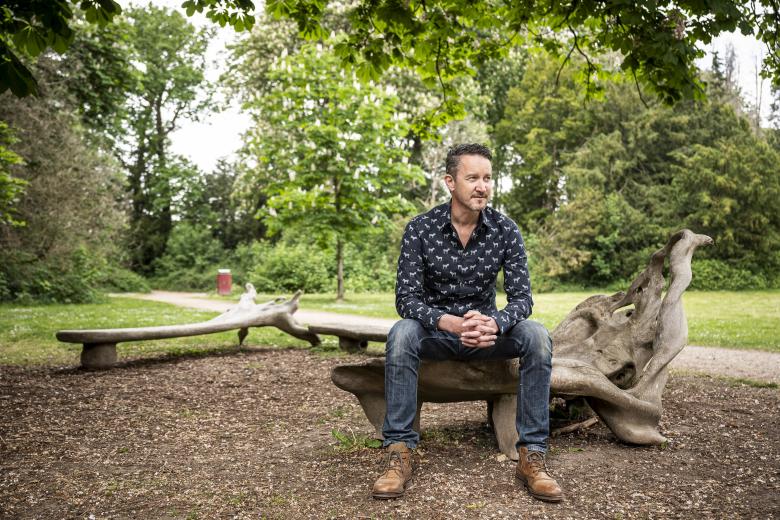Who should get the COVID-19 vaccine first?
People with pre-existing medical conditions, ‘essential’ professions and virus spreaders should be vaccinated first. That is the result of a study where researchers asked a representative sample of 2000 Belgians who should get the upcoming COVID 19-vaccine first. However, a large majority of the respondents (78%) said that scientists should make that decision rather than the government or the people. These findings are pending full peer review, but the results were already made public in CEPR – Covid Economics.
In all likelihood, there will be a safe and effective COVID-19 vaccine available soon. Pfizer announced one with 90% effectiveness on Nov. 9th but other promising candidates are also under development. However, available supply will not be enough to vaccinate everyone at once.
Policy makers at national and international level are currently developing vaccine prioritization strategies. Suggested strategies are to prioritize vaccination according to age (prioritizing the elderly), occupation (prioritizing essential professions like healthcare workers), or health status (prioritizing those with weak immune systems due to pre-existing conditions). Some experts are suggesting to prioritize those who spread the virus most in order to stop transmission of the virus in the population, and consequently, to indirectly protect vulnerable groups. Others argue that everyone should have an equal chance of getting a vaccine, through some kind of lottery. Still others argue that working people in general should get priority so that already damaged economies are not harmed any further.
Whichever strategy is ultimately chosen, it is important that there are sufficient levels of public support for a successfully engaged COVID-19 vaccination policy. The public opinion is important here. However, it remains unknown what the general public wants.
Ranking eight possibilities
Jeroen Luyten (KU Leuven), Sandy Tubeuf (UC Louvain), both professors in health economics and Roselinde Kessels (Maastricht University), professor in health econometrics, have conducted a ‘best-worst ranking’ exercise and a ‘discrete choice experiment’ on a representative sample of 2,000 Belgians (age 18-80) in order to elicit their view on how to set fair COVID-19 vaccine priorities across the population.
In the ‘best-worst ranking’ exercise they asked people to rank 8 possible strategies from ‘most appropriate’ to ‘least appropriate’. These strategies were: prioritizing (1) those with pre-existing conditions, (2) the elderly, (3) the biggest spreaders, (4) working people, (5) essential professions, (6) no one gets priority (random allocation like in a lottery), (7) the fastest decision-makers (‘first-come, first-served’) and (8) the highest bidders (a market).
“Respondents ranked three sub-groups as priority to access the COVID-19 vaccine”, professor Tubeuf explains. “First those with pre-existing conditions, second those with essential professions, and third individuals older than 60. Other strategies such as allocating the vaccine using a ‘lottery’, ‘first-come, first-served’ approach or willingness-to-pay were ranked last.”
A matter of choice
In the choice experiment the researchers presented respondents with a series of choice sets of two concrete individuals who competed for the same COVID-19 vaccine. For each of these choice sets, respondents had to choose the individual to prioritize for vaccination. The individuals were described by five characteristics:
their age,
whether their profession was an ‘essential’ one (healthcare worker, police, firemen, etc.),
whether they had pre-existing conditions that made them vulnerable for severe COVID-19 complications and death,
how big the economic impact or the cost to society would be because of their sickness (0, 100, 1000 euros per day of sickness),
how many other people they would probably infect (1 or 10 people).
These individuals were also labelled with concrete numbers on what spreading the virus and being costly to the society meant.
By observing these choices between competing individuals in large numbers (20,000 choices observed in total) the researchers could indirectly infer how important each criterion was in getting priority access to the vaccine according to the respondents.
In this experiment, people’s ranking changed. “The respondents divided in two groups”, professor Kessels revealed. “While both groups wanted to vaccinate essential professions in the second place, group one primarily wanted to target virus spreaders whereas group two wanted to prioritize those with pre-existing medical conditions.”
“Members of group two (prioritizing the sick) were more likely to be from Dutch-speaking parts of Belgium, more likely to accept a COVID-19 vaccination, less likely to think that the population itself should make the priority decision and more likely to be employed than members of group one”, says professor Luyten. “Neither age nor socioeconomic status (having an ‘essential’ profession, financial situation, level of education) were associated with membership to either groups. So, respondents’ choices in the study were not driven by self-interest.”
Hence, in the choice experiment, vaccinating those over 60 years of age or people who were the most costly to society became of low priority relatively to the other groups.
Professor Luyten adds: “Interestingly, we found that 78% of the respondents indicated that ultimately the decision whom to prioritize should be made by scientists and not by the government (10%) nor the population (12%).”
Successful vaccination campaign
“There are many reasons why it is important to understand how the population thinks about fair prioritization of COVID-19 vaccines. One is that it will be important for a successful vaccination campaign”, professor Tubeuf says.
When asked to rank overall different vaccine allocation strategies, Belgians would prioritize similar groups of the population who are currently proposed by governments and experts’ groups (targeting health workers and old and ill people at high risk of severe COVID-19 or death). However, as soon as we provided respondents with more specific numbers of what being a high virus spreader meant, their preferences leant towards a vaccination strategy simultaneously prioritizing medically vulnerable groups, high virus spreaders, and essential professions but not including older people as a priority group.
Also read
-
Working less affects pension accrual
If you start working less, it will also affect pension accrual. You will have less to spend after you retire. Employees do not give this enough thought.

-
Fossil subsidies undermine climate policy
Fossil subsidies undermine climate policy, says Patrick Huntjens and other colleagues in an opinion article.

-
Obligation for energy label C for offices seems to have desired effect
Obligation for energy label C for offices seems to have desired effect
